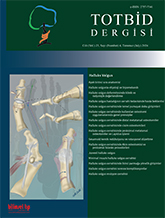
Minimally invasive surgery has received increasing attention in orthopedic surgery over the last 30 years. Minimally invasive procedures reduce surgical trauma because they are performed without large incisions, and the damage these procedures cause to soft tissues is limited. Additional tools such as special surgical instruments and fluoroscopy may be required in some percutaneous techniques. When the history of minimally invasive techniques in hallux valgus surgery is examined, the evolution of methods that emerged in different generations is observed. The Reverdin-Isham technique emerged as the first generation, but was not preferred due to some disadvantages. In the second generation, methods such as the SERI (simple, effective, rapid, inexpensive) technique have become more common and popular. Later, third and now fourth generation techniques were developed, especially methods such as the minimally invasive extraarticular transverse and Akin osteotomy (META) procedure, aimed at correcting more complex deformities of hallux valgus. Although each generation has advantages and disadvantages, the latest generation techniques appear to be advantageous in early functional scores while achieving similar radiological corrections as open surgical techniques. For the success of minimally invasive surgery, it is essential that patients receive regular follow-up and physiotherapy in the postoperative period and receive good rehabilitation support. Theoretically, the advantages of minimally invasive interventions are; reducing soft tissue damage, reducing postoperative pain and joint stiffness, fewer wound problems, better cosmetic appearance, and shortening the duration of surgery and hospital stay. However, due to lack of anatomical and technical knowledge, in addition to iatrogenic damage, nonunion and recurrence are among the possible complications, especially in first and second generation procedures. Minimally invasive surgery courses that include cadaver training are recommended to prevent complications and shorten the long learning curve.